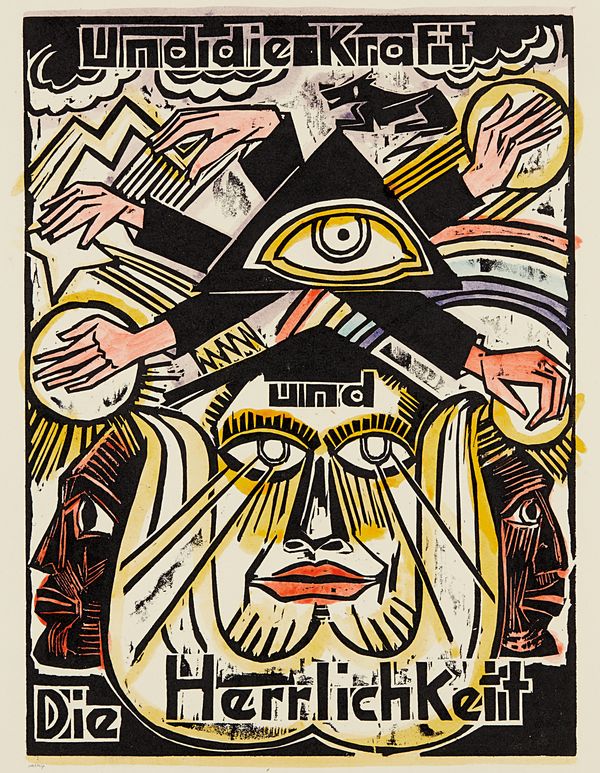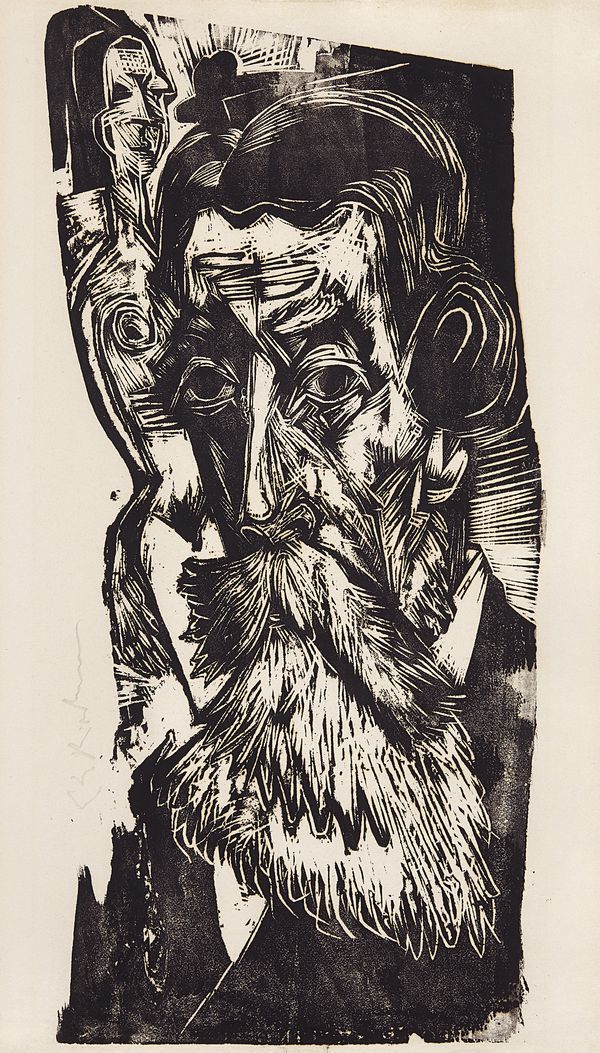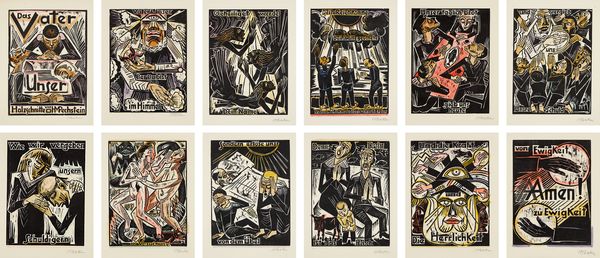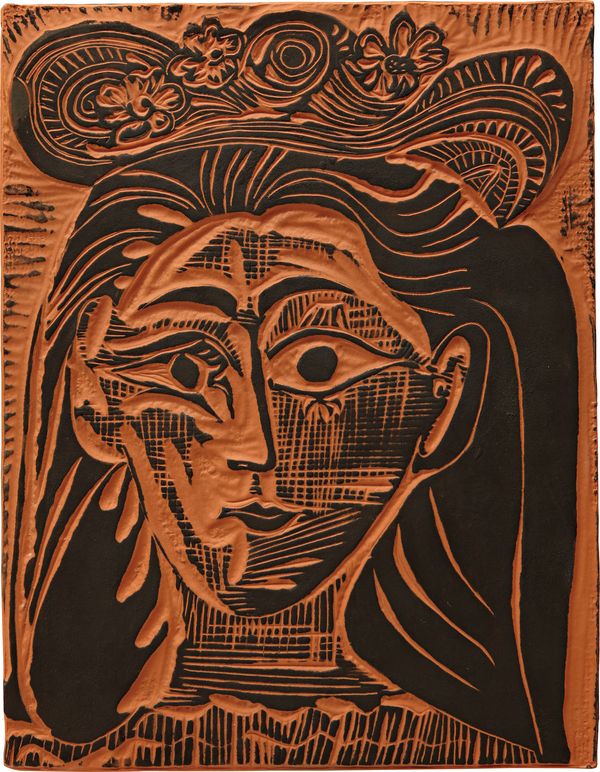Max Pechstein Das Vater Unser (The Lord's Prayer), 1921, woodcut with hand-coloring (detail)
Ann Nisenson began collecting Pre-Columbian and German Expressionist art in the 1960’s from the influential Los Angeles dealers O.P. Reed, Marilyn Pink, Perls Gallery, Zeitlin & Ver Brugge on La Cienega Boulevard and Robert Light in Santa Barbara. What is especially apparent in the imagery and objects Ann gravitated towards, and as evidenced in the selection from our Evening & Day Editions sale, is the theme of portraiture, figuration and narrative content.
The collection was rooted in classic Die Brücke artists’ graphic woodcut portraits (Ernst Ludwig Kirchner, Karl Schmidt-Rottluf, Erich Heckel and Max Pechstein) and related artists conveying their cultural essays of life and struggle in early 20th century Germany, sometimes with grander, universal themes of humanity (Otto Dix and Käthe Kollwitz). These works were acquired alongside the Modern European artists, Braque and Picasso’s works from the 1950’s and 1960’s – contemporary at the time when they bought them – but imagery which still incorporated the expressionistic influences of the earlier German artists.
Ernst Ludwig Kirchner Kopf Ludwig Schames (Head of Ludwig Schames), 1918, woodcut
Literally translated to "the bridge," Die Brücke works could often be thought of as linking cultures to one another across time and geographic constraints. The treatment of figures by these artists often shows the influence of African and Oceanic sculpture, which was also being studied at the time by Picasso, amongst others. They also looked back to the German origins of the print and to the devotional themes of the earliest religious woodcuts. Ernst Ludwig Kirchner’s Kopf Ludwig Schames (Head of Ludwig Schames) is one of the 14 works from the Nisenson collection to be offered here. This portrait of Kirchner’s art dealer perfectly captures the ideals of the movement and exploits the medium to its highest graphic potential.
This image is considered one of Kirchner’s most dramatic and monumental woodcut portraits of his much admired dealer in Frankfurt, Ludwig Schames. Kirchner did not have access to a printing press at the time so he inked and rubbed every impression by hand which gave each one unique characteristics. Professor Dr. Günther Gercken, who recently completed the fourth volume (1917-1919) of the catalogue raisonné of prints by Ernst Ludwig Kirchner, notes that over 25 impressions of the second state are in institutions and museums around the world. The image Kopf des Kranken (G. 872, D. H327, S. H280) is carved on the reverse of this block.
Dieser Kunsthändler ist übrigens der einzige anständige, den ich kenne, ein richtiger Frankfurter Patrizier. (This art dealer is by the way the only honorable one I know of, a real Frankfurt Nobleman.)
– Ernst Ludwig Kirchner
Max Pechstein Das Vater Unser (The Lord's Prayer), 1921, the complete set of 12 hand-colored woodcuts
Max Pechstein completed the Das Vater Unser (The Lord’s Prayer) portfolio in 1921, during a time of intense personal and social upheaval. With its message of forgiveness and deliverance, the Lord’s Prayer had resonated with much of society in postwar Germany, which was suffering from war guilt, food shortages, and other economic privations. Just two years before, Pechstein had been an instrumental figure in the artist-led organizations that had agitated for social reform in the newly formed German republic. But like many of his peers he grew disillusioned and began looking for change not through revolution but through heavenly intervention. (Source: MoMA)
Otto Dix Junge Familie (Liebespaar) (Young Family, Lovers), 1918, ink and tuche drawing
After art school in Dresden, Otto Dix volunteered service for World War I in order to "see everything with my own eyes" and was placed on both the Eastern and Western fronts in France. During this time, he produced several hundred drawings and gouaches, mostly based on what he had seen in the trenches.
In 1918, after four years of combat, Dix resumed his studies and developed his skills with the brush incorporating elements of Orphic cubism, as illustrated in Junge Familie (Liebespaar), 1918. Dix worked on mystical birth motifs (cycles of life) during 1914 and 1918. Only with the birth of his own children in 1923 and 1927 did he portray them in an earthly realm and his Weimar-era style.
Pablo Picasso Femme au chapeau fleuri (Woman with Flowery Hat), 1964
The Nisenson collection also features examples of prints and ceramics by Pablo Picasso who embraced many of the same expressionistic elements throughout his fruitful career. As seen in this earthenware plaque Femme au chapeau fleuri (Woman with Flowery Hat), 1964, its surface mimics the relief of a carved and inked woodblock ready to be printed.




